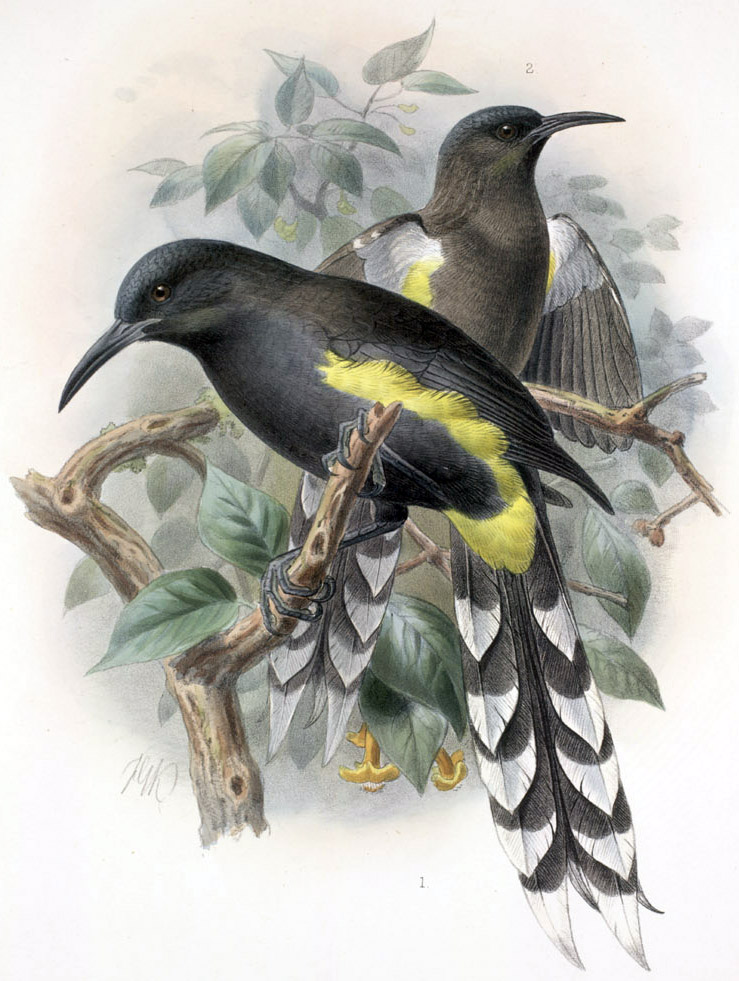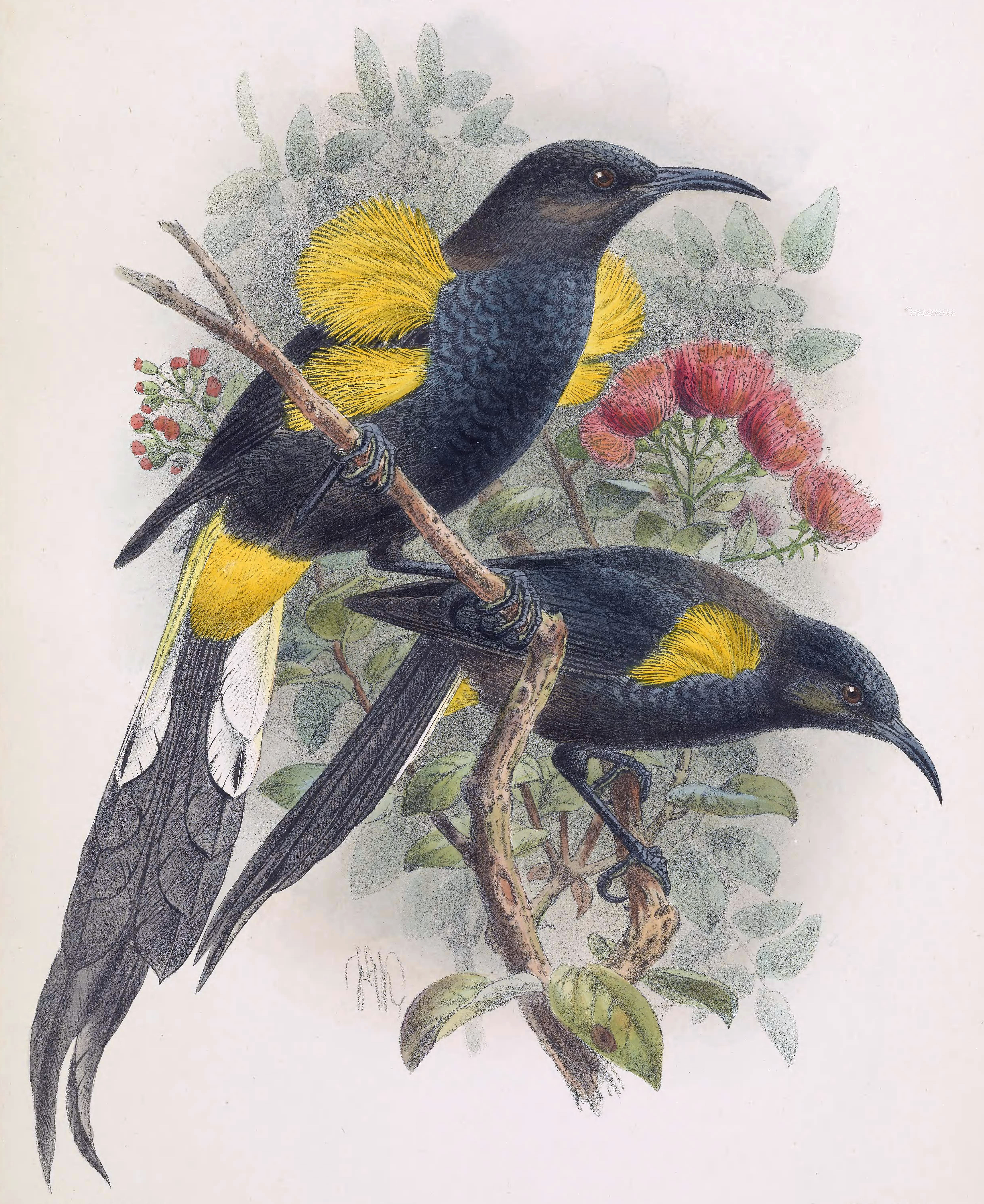|
ʻŌʻō
__NOTOC__ ''Moho'' is a genus of extinct birds in the Hawaiian bird family, Mohoidae, that were endemic to the Hawaiian Islands. Members of the genus are known as ''ĹŤĹŤ'' in the Hawaiian language. Their plumage was generally striking glossy black; some species had yellowish axillary tufts and other black outer feathers. Most of these species became extinct by habitat loss, the introduction of mammalian predators (like rats, pigs, and mongooses), and by extensive hunting (their plumage was used for the creation of precious ''aahu alii'' (robes) and ''ahu ula'' (capes) for '' alii'' (Hawaiian nobility). The Kauai ĹŤĹŤ was the last species of this genus to become extinct, likely a victim of avian malaria. Until recently, the birds in this genus were thought to belong to the family Meliphagidae (honeyeaters) because they looked and acted so similar to members of that family, including many morphological details. A 2008 study argued, on the basis of a phylogenetic In biology, ... [...More Info...] [...Related Items...] OR: [Wikipedia] [Google] [Baidu] |
Hawaiʻi ʻōʻō
The Hawaii ōō (''Moho nobilis'') was a member of the extinct genus of the ōōs ('' Moho'') within the extinct family Mohoidae. It was previously regarded as member of the Australo-Pacific honeyeaters (''Meliphagidae''). Description The Hawaii ōō was first described by Blasius Merrem in 1786. It had an overall length of , wing length of , and tail length of up to . The sexes were similar in appearance, but females were smaller and the end of their tail feathers was not as twisted as that of males. The colour of its plumage was glossy black with a brown shading at the belly. It also had yellowish tufts at the axillaries, which juveniles lacked. It had some yellowish plumes on its rump, but lacked yellow thigh feathers like the Bishop's ʻōʻō, and also lacked the whitish edgings on its tail feathers like the Oʻahu ʻōʻō. It had the largest yellow plumes on its wings out of all the species of ōō. The name of the cinder cone Puʻu ʻŌʻō is often translated as " ... [...More Info...] [...Related Items...] OR: [Wikipedia] [Google] [Baidu] |

